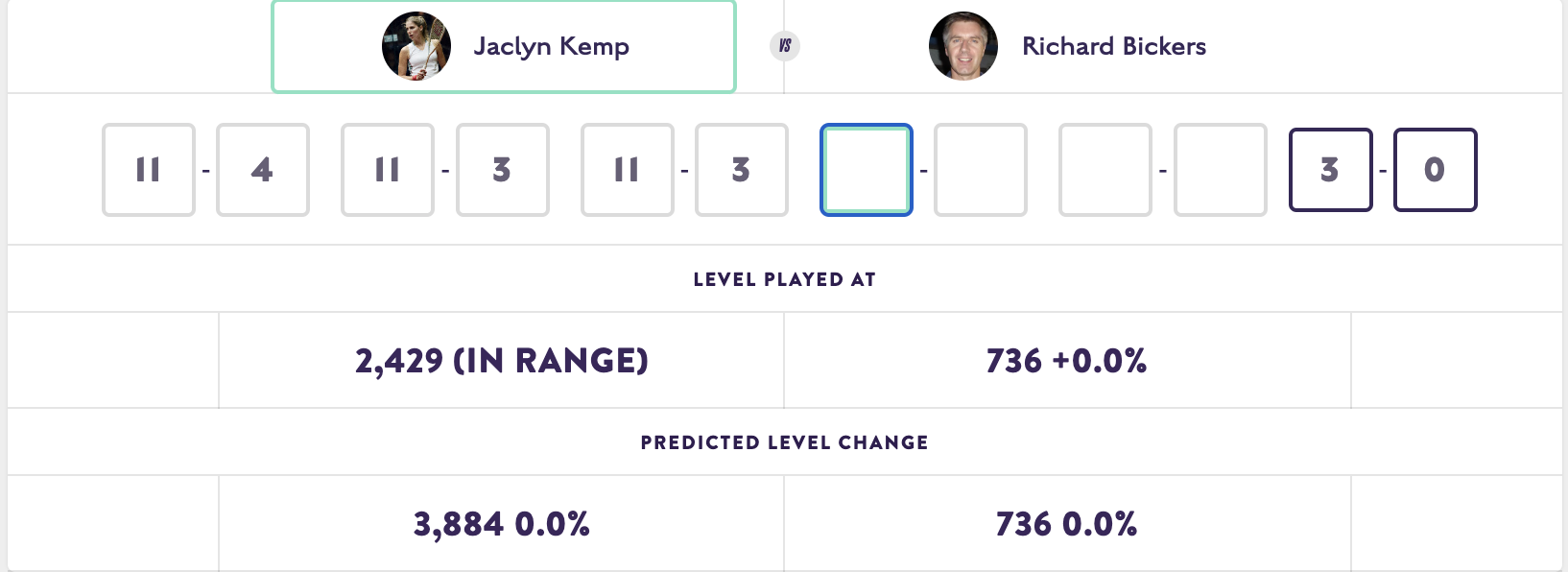In the world of SquashLevels, there is a misconception that better players must hammer their lesser opponents in order to maintain their rating, however, this is simply not the case.
SquashLevels is a very dynamic system so the level changes after each match can come as a bit of a surprise at first. This is also what makes the system so engaging as you really do get something out of each match – even if it’s a reminder you need to keep putting the effort in!
However there is a common misconception that you need to win every game for you level to go up, and even worse, that you must hammer your lesser opponent in order to maintain your rating. Both of these are simply not the true.
If we look at when you play someone with a lower level than you; the algorithm automatically takes the difference in playing level between players into account and actually expects the better player to take it easy on their lesser opponent. They won’t lose any level at all unless they play a whole lot lower level than that – and even then, they won’t lose much.
This piece of the algorithm has come from a lot of research into the behavioural modelling of the algorithm and specifically pulled actual playing level data from the millions of results we have in the system to see what really happened in these cases. One of the interesting learnings from this is that the better player actually starts to hold back even when there’s not that much difference between the players. Probably subconsciously and actually unwise given how much we vary but that’s’ what happens!
Our analysis covered player level ratios right up to 10:1 and showed remarkable consistency in the effort that the better players put in at all levels. Even the pros. We found a distinctive range of effort that we consider the ‘acceptable range’ for the better player. This allows us to put the result into one of four bands.
The Better Player Played Better Than Expected
The better player actually played better than expected. Clearly no leniency shown and normal results processing is applied. They go up as normal, their lesser opponent goes down.

The Better Player Played Down
The better player played down as expected, within a pre-determined percentage band of their level. Typical behaviour (as we have learned) and no change for either player.

The Lower Player Played Better Than Expected
The better player played at a lower level than expected but within their acceptable range, and the lower player played better than expected. No change for the better player but their opponent gets something for pushing them hard.

The Better Player Played Below Their “Acceptable Range”
The better player played below their ‘acceptable range’. Their level goes down a little (it’s still damped) and their opponent is rewarded with an increase.

What About Unevenly Matched Players?
In addition to all this there is more damping applied the further apart the players are so even the most generous of run-arounds shouldn’t have too much effect if the players are very unevenly matched. We’re talking 3:1+ here, mind. Just being 30% better doesn’t count as all that one-sided!

What we’re hoping is that this will encourage the better players to give their opponent a good game but certainly not destroy them. They should also be aware that their level will go down if they just mess around but, even in those cases, it shouldn’t go down by much. These are verging on the exhibition matches but we didn’t want to exclude them altogether.
Sign up to the SquashSkills newsletter
Get world class coaching tips, straight to your inbox!


